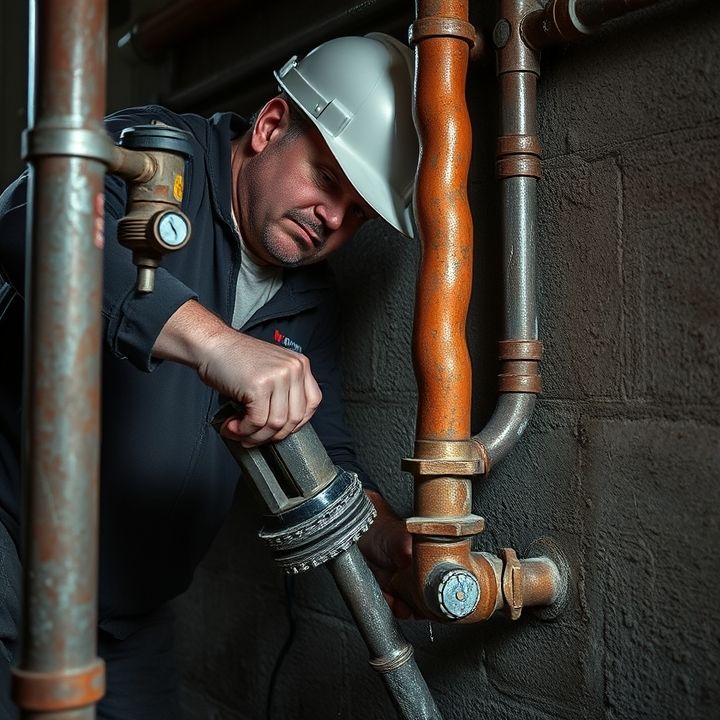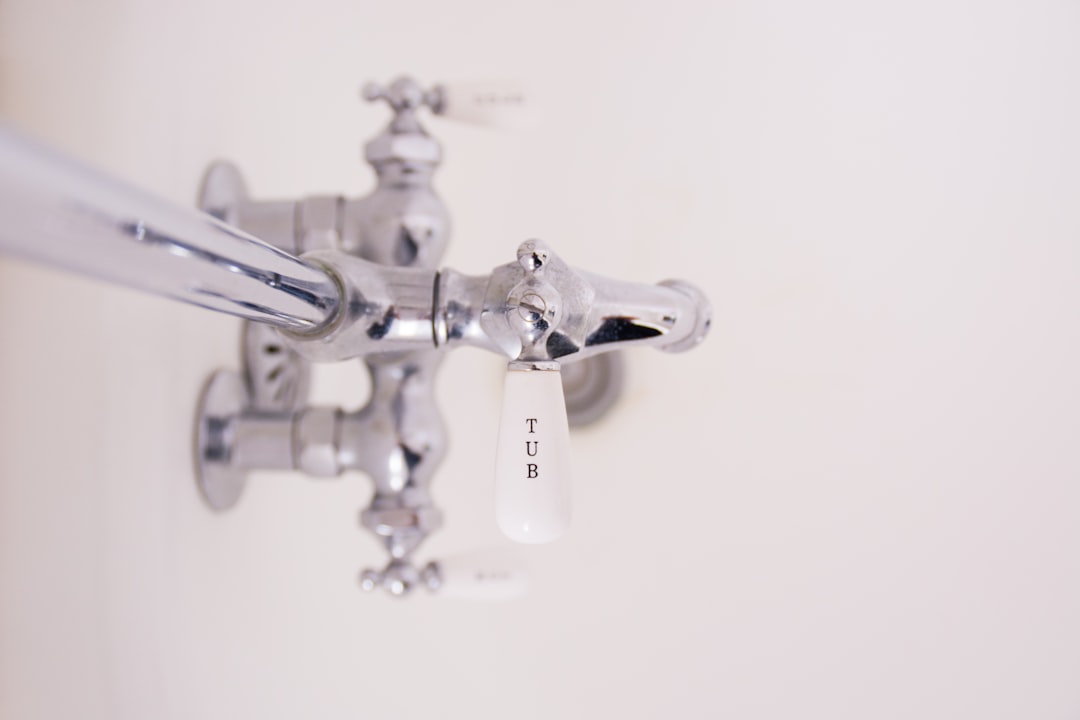Table of Contents
- Introduction
- Hidden leaks in plumbing systems
- Faulty plumbing fixtures causing continuous water flow
- Issues with water heaters leading to increased usage
- Inefficient plumbing drain systems causing backups
- Old or damaged pipes requiring replacement
- Clogged toilets and drains leading to excessive flushing
- Problems with irrigation systems and outdoor plumbing
- Backflow issues resulting in water wastage
- Conclusion
- Frequently Asked Questions
Introduction
Water bills can be a source of frustration, but what if we told you that a significant portion of those extra charges could be avoided with the right knowledge?
As homes age, leaks and plumbing issues often remain hidden until they wreak havoc on both your property and your wallet.
From dripping faucets to silent leaks within walls, these seemingly minor plumbing problems can significantly inflate your water bills over time.
In this article, we will explore the various plumbing issues that can lead to unexpected expenses and how proactive leak detection can ultimately save you money.

Join us as we dive deep into the world of plumbing and guide you through understanding the true cost of neglecting these problems.
Hidden leaks in plumbing systems
Hidden leaks in plumbing systems can significantly contribute to increased water bills. These leaks often occur in areas that are not easily visible, such as behind walls, under floors, or within underground pipes. Because they are concealed, they can go unnoticed for a long time, leading to substantial water wastage.
Common causes of hidden leaks include deteriorating pipe materials, corrosion, and poor installation practices. Over time, even small leaks can lead to considerable water loss. Moreover, hidden leaks can also damage the surrounding structure, leading to costly repairs in addition to higher water bills.
Detecting these leaks can be challenging but is crucial for preventing financial and structural issues. Homeowners should be vigilant for signs of hidden leaks, such as unexplained increases in water bills, damp spots on walls or ceilings, and the sound of running water when no taps are in use. Regular plumbing maintenance and inspections are essential in identifying potential leaks early, thus safeguarding both finances and property.
Faulty plumbing fixtures causing continuous water flow
Faulty plumbing fixtures can lead to continuous water flow, ultimately causing a significant increase in water bills. Common fixtures that may experience issues include faucets, toilets, and showerheads. For instance, a dripping faucet may seem harmless, but over time, that small leak can waste gallons of water, translating to higher utility costs. Similarly, a toilet that does not shut off properly can continuously run, using up an excessive amount of water without any visible signs of leakage. This can be particularly alarming, as it often goes unnoticed until the water bill arrives.
Another culprit may be malfunctioning showerheads, which can drip or spray inconsistently, leading to unnecessary water waste. Regular maintenance and timely repairs of plumbing fixtures are essential to prevent these issues. By addressing even minor leaks, homeowners can save money and conserve water, contributing to both economic and environmental benefits. Identifying the early signs of faulty fixtures, such as unusual noises or damp spots, can help in mitigating potential water bill increases.
Issues with water heaters leading to increased usage
Issues with water heaters can significantly contribute to increased water usage, leading to higher bills. One common problem is a leaking water heater. A slow leak can go unnoticed for some time but can waste a substantial amount of water. This not only increases your water bill but can also lead to water damage in your home.
Another issue could be improper temperature settings. If a water heater is set too high, it will use more energy to heat the water, which can lead to increased usage and costs.
Additionally, sediment buildup in the tank can reduce the efficiency of the water heater. When sediment collects, the heater has to work harder to heat the water, which can also lead to higher consumption.
Furthermore, an aging or malfunctioning unit may not operate as efficiently as it should, causing an increase in water demand. Regular maintenance and timely repairs are crucial in avoiding these issues and managing water bills effectively.
Inefficient plumbing drain systems causing backups
Inefficient plumbing drain systems can lead to significant backups, causing inconvenience and potential increases in water bills. When drains are not functioning optimally, water may not flow freely, resulting in slow drainage or complete blockages. These issues can be due to various factors, including the accumulation of debris, grease buildup, or tree root intrusion. Over time, these obstructions create pressure in the plumbing system, which can lead to leaks or ruptured pipes.
Additionally, when water cannot drain properly, it may cause a backlog in usage, prompting individuals to use more water than necessary to flush out the systems. This increased water usage can manifest in higher water bills. Furthermore, recurring drain issues often signal the need for complex repairs or replacements, which can add to overall costs. Regular maintenance, such as cleaning and inspections, is crucial to prevent such plumbing inefficiencies and to ensure that drainage systems are operating effectively.
Old or damaged pipes requiring replacement
Old or damaged pipes can significantly contribute to increased water bills for homeowners. As pipes age, they are susceptible to corrosion, which can lead to leaks. These leaks may not always be visible, occurring behind walls or underground, but they can still cause water to escape unnoticed. Over time, even minor leaks can add up, leading to a noticeable rise in water consumption and thus higher bills.
Additionally, older pipes might be made from materials that are more prone to deterioration, such as galvanized steel, which is less durable than modern alternatives. Replacing old pipes not only improves water efficiency but also enhances the overall water quality in a home. Furthermore, damaged pipes can lead to further issues such as water pressure problems and even structural damage if left unattended. Investing in regular plumbing inspections can help catch these issues early, potentially saving homeowners money in the long run by addressing repairs before they escalate.
Clogged toilets and drains leading to excessive flushing
Clogged toilets and drains can significantly contribute to an increase in water bills, primarily due to excessive flushing. When a toilet is clogged, it fails to function properly, leading users to flush multiple times in an attempt to clear the blockage. This excessive flushing not only wastes water but can also create a cycle of ongoing issues if the clog is not addressed adequately.
Similarly, clogged drains can lead to backup situations, forcing homeowners to use more water than usual to manage the problem. For instance, if a sink or shower drain is blocked, the water can accumulate and require flushing to clear it away, thus increasing overall water usage. It’s important to recognize that these plumbing issues often stem from various factors, including the accumulation of debris, hair, soap residue, or foreign objects. Regular maintenance and timely interventions can help mitigate these issues and keep water bills manageable.
Problems with irrigation systems and outdoor plumbing
Problems with irrigation systems and outdoor plumbing can significantly contribute to increased water bills. One common issue is leaking irrigation lines, which can waste a considerable amount of water, especially if the leaks are not immediately detected. These leaks may occur due to aging pipes or poor installation.
Another potential problem arises from faulty sprinkler heads that don’t shut off properly, leading to continual water flow even when not needed. Additionally, improper scheduling of irrigation can also lead to overwatering, contributing to higher bills.
Poor drainage around outdoor plumbing can lead to water pooling, which may cause backflow into the system, wasting water and leading to increased pressure on pipes. Clogged gutters or downspouts can exacerbate these issues by redirecting water where it shouldn’t go.
Regular maintenance and inspections of these systems are vital in preventing these plumbing problems, ensuring efficient water usage and helping to manage utility costs effectively.
Backflow issues resulting in water wastage
Backflow issues can significantly contribute to water wastage, leading to higher water bills for homeowners. Backflow occurs when water flows in the opposite direction in a plumbing system, often due to a drop in water pressure or a change in the supply stream. This can allow contaminants from the sewer or surface water to enter the clean water supply, resulting in not only potential health hazards but also unnecessary water usage.
One common cause of backflow is the presence of cross-connections in the plumbing system, where potable water lines and non-potable water sources intersect. When siphoning occurs, such as during heavy rainfall or plumbing demand, backflow can pull dirty water into the clean lines. This may necessitate constant flushing or testing of the system to ensure cleanliness, thus elevating water consumption.
Regular maintenance and installation of proper backflow prevention devices are essential. These devices help ensure that water flows in the intended direction, thereby reducing the risk of contamination and unnecessary water loss, ultimately leading to lower water bills.
Conclusion
In summary, addressing plumbing issues is critical not only for your home’s structure but also for managing your water bills effectively. From hidden leaks and faulty fixtures to old pipes and irrigation problems, each issue can significantly inflate your water usage and costs. By being proactive and vigilant about these potential plumbing problems, you can save money and conserve water. Regular maintenance and timely repairs are essential strategies to mitigate these challenges and ensure that your plumbing system operates efficiently.
If you’re experiencing any signs of plumbing issues or suspect hidden leaks, don’t wait until your water bill skyrockets. Take action today and call 573-555-2121 for expert plumbing assistance. Our team is ready to help you diagnose and resolve any plumbing problems, ensuring that your home remains efficient and your bills remain manageable.
